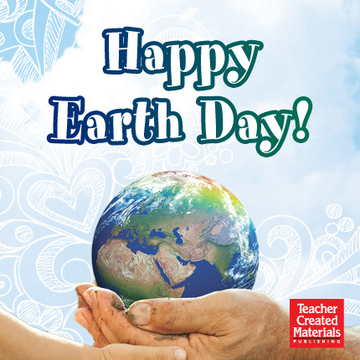What Part of the Word Geology Is the Word Root

Celebrate Earth Day with Word Roots
Earth Day is around the corner and is an excellent opportunity to dig into word roots as a tool for building vocabulary in all students!
Our Brains Are Pattern Detectors
There are two great things about using Latin and Greek roots as the foundation for building students' vocabulary. First, we know that our brains are pattern detectors; we have an ability to recognize and make sense of patterns in our environment, whether those patterns are the ceiling tiles in your office or the style of house you live in. Latin and Greek roots are essentially word patterns that not only share orthographic structures (i.e., letter arrangements), but also meaning (e.g., sub- means "under" when used as a prefix in most English words). Second, Latin and Greek roots have a multiplier effect on English words. That is, knowledge of one root can help students derive the meaning of 20 or more words in English. Some familiar roots generate over 150 words!
The Earth Day Connection
With this in mind, here's an example of how you can use a Latin and a Greek root to celebrate Earth Day (April 22nd) and the several days that follow. (The lessons take only five minutes per day, yet they can yield some amazing results in terms of students' concept knowledge, critical-thinking skills—and vocabulary development!)
Day 1 (Earth Day)
Present the following words to students and ask them to determine what is common in all three words:
- geology
- geometry
- geography
Help students recognize geo- , which comes from Greek and means "earth." Also, help them understand that geo- does not just provide a shared structure in these words, but also it gives a shared meaning to them. Geology is the science that deals with the make up and physical history of Earth; geometry is the branch of mathematics that originally dealt with the measurement of Earth; geography is the study of the surface features of a region of Earth.
Day 2
With your students, brainstorm and display other words that contain the word root and discuss what these words have to do with Earth. For example:
- geothermal
- geographer
- geologist
- geopolitics
- geodesic dome
Day 3
Present the following words to students and ask them to determine what is common in all three words:
- terrain
- subterranean
- territory
Help students recognize that terr(a)- comes from Latin and means Earth. Also, help them understand that terr(a)- does not just provide a shared structure in these words, but also it gives a shared meaning to them. Terrain is the "lay of the land," the surface features of a piece of land; subterranean is below Earth's surface; territory is the land belonging to a particular country, or a tract of land belonging to the United States that is not a state.
Day 4
With your students, brainstorm and display words that contain the word root and discuss what these words have to do with Earth:
- terrier
- terrazzo
- terra cotta
- extraterrestrial
- Mediterranean
Day 5
Put all the words you have shared with students on display on a classroom word wall entitled Earth Day! Make reference to these words throughout the next several days and ask students to use the words in their own oral and written language.
What Part of the Word Geology Is the Word Root
Source: https://www.teachercreatedmaterials.com/blog/article/celebrate-earth-day-with-word-roots/